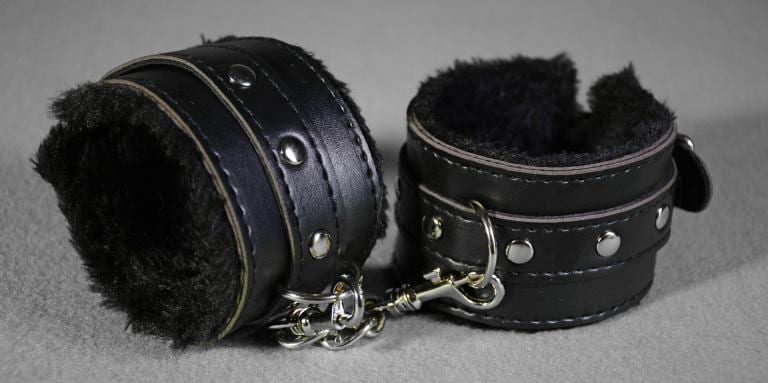“Toxic femininity” is one of those terms that’s incredibly problematic, largely because it was first formulated as a form of tu quoque. “Well, if there’s toxic masculinity doesn’t that imply that there’s toxic femininity too? Aren’t women just as capable of being toxic as men?”
Gotcha!
Everyone (except the person doing it) recognizes this as a rather tedious form of argument: the grown-up equivalent of “I know you are, but what am I.” And predictably, in most cases the person arguing in favour of “toxic femininity” really means “feminism is toxic. Men and women get along much better when women behave the way men want them to.”
So before I talk about toxic femininity I want to clear that baggage out of the way a little and roll the conversation back to a more fundamental question: what is gender, and what is it for?
A Brief Guide to Social Construction
Gender is a form of cultural expression, the primary purpose of which is to facilitate heterosexual mating and the rearing of children. It has its origins in sexual biology, but the content of gender is socially constructed.
That doesn’t mean it’s arbitrary, imaginary or unnecessary, but it does mean that gender roles, expectations and stereotypes will naturally shift over time in response to cultural change. Those shifts are not “unnatural,” nor are they arbitrary: they are shaped by a large number of factors including technology, politics, cultural values, and economics. And of course, all of these factors themselves inter-relate to form the incredibly complex edifice of civilization.
It’s kind of like traffic laws. They are socially constructed rules derived from the real needs of the human community. If you have a simple culture you’ll likely have simple rules like “cows can only move through the town at dawn and twilight” or “if two people using a path are on a collision course, the person with the lower social status will step to the side.”
As you introduce more elements into the equation (carts, horses, bicycles, cars, etc.), the laws have to become more complex to ensure that people, goods and vehicles are able to move about safely and efficiently. Each culture will solve these problems in different ways that will reflect that values, traditions, geographic and demographic features of the society.
So, to an American it might seem “unnatural” to drive on the left hand side of the road, just as to a Brit is seems unnatural to drive on the right. But really, both ways are equally valid. If, on the other hand, you have no clear convention and people drive on both the left and the right, you’re probably in downtown Naples and you’re going to be sitting there for a long time.
Feminism and the Natural Law
Alright, so far more traditionalist readers are probably nodding along and thinking “Yes, that’s it exactly! All of these problems we have are because women need to stay in their own lane.”
Except, here’s the thing. The radical changes in gender roles that have happened over the last century are not the result of women driving in the wrong lane. They’re the result of the invention of the automobile.
I mean this metaphorically, but it’s also accurate in a literal sense. If you go back before the invention of the train, travel was a long, dangerous undertaking. Even in the most civilized and lawful territories of the pre-modern world you had to be prepared for bandits and wild animals. You often had to travel for days or even months, if you didn’t have protection you had to be prepared to defend yourself, and inclement weather could stall you indefinitely. If a woman had children – which most women in those societies did – then unless she was either very wealthy or lived in a migratory community, like the Roma, frequent travel would have been impracticable. Mercantile business was, therefore, usually undertaken by men.
Modern modes of transport change that, for obvious reasons.
And it’s not just automobiles. Modern civilization has involved a series of major technological revolutions that have changed the game in terms of women’s participation in social life. When machinery replaces sheer brawn, the typical differences in male and female muscle-mass become less of an impediment to women’s participation in the work-force or the military. When infant mortality drops, it becomes possible to perpetuate the species with fewer births, leaving more women with more time to pursue activities other than child-rearing.
Women have moved into traditionally male spaces because of social and technological changes. The value system that promotes this shift in gender roles is often referred to as “feminism.” It’s success is not a result of some demonic attack on the family or of women wanting to “become men” or of a denial of “nature.” It’s the result of one of the simplest truths undergirding the natural law: humans perceive a moral imperative to increase human thriving and human flourishing.
In the same way that improved agricultural practices once made it possible to free male labour from the land (leading to the development of the leisure classes which, really, form the basis for everything that we call “civilization”), improved prenatal and neonatal care make it possible to free female labour from the home. This means that women in technologically advanced societies now have the leisure necessary to become fully involved in all areas of civilized cultural life.
To prevent this is to place an artificial and violent limitation on the capacities not only of women but of society more general. This restricts human thriving and flourishing, which is why the majority of people see it as gravely immoral.
Chivalry is Dead and Decomposing
How do toxic gender roles play into this? Well, I mentioned in my last article that toxic masculinity often encourages men to be juvenile. It also encourages retrograde expressions of masculinity. The obsession of many incels, trad Catholics and Men’s Rights Activists with Knight or Crusader imagery illustrates this point.
How so? Well, let’s look at Medieval chivalry – literally, the set of rules that governed the behaviour of the chevaliers or, in English, knights. These rules were put in place for a specific reason: centralized government had collapsed with the decline of the Roman Empire in the West, leaving a power vacuum. The early medieval monarchies lacked the bureaucratic and technological infrastructure necessary to effectively administrate large territories.
Basically, government consisted of a loose network of nobles who were mostly bound to one another by the fear of mutual violence. This violence was primarily carried out by mounted warriors (knights) and by men who owed fealty to the knights. The situation was kind of analogous to modern states where central government is weak and unable to control the local druglords or warlords. The early medieval knight was much more like a dangerous gang leader than he was like something out of Tennyson or Mallory.
As civilization began to recover, it was necessary to build social cohesion, which meant that the previously unfettered violence of the equestrian classes had to be tempered. Chivalry was basically the set of ethical and aesthetic norms that arose in order to accomplish that end.
In that context, chivalry presented a masculine ideal that was intended to moderate the violent passions of the nobles. Restrictions on lust meant a reduction in the perennial problem of men going to war over women. Fealty to the King really meant an increased respect for the social cohesion offered by the monarchical state.
Long story short, the development of chivalry involved a long, slow process of reducing and restricting male violence to the point where social stability became possible again. As such, it was (in context) a powerful and positive development that improved the lot of both men and women.
In the modern world, though, this model of masculinity is deeply antisocial. It represents a desire to return to a world in which rich and powerful men are able use lethal force to lord it over others (social inferiors, foreigners, women) without the impediment of law. In a modern context, chivalry no longer makes sense except as an expression of frustration with the ways that our society protects the vulnerable by demanding that men control their irascible passions.
Of course, atavistic masculinities can only function in the presence of equally atavistic femininities. Gender roles work in pairs because gender expresses the ways that heterosexual men and women seek out appropriate mates and produce offspring. If you have a large number of men who are clinging to out-dated models of ideal male behaviour, those men will face overwhelming rejection from women who have a vested interest in dismantling those models.
And here, at last, we have enough of a foundation to start discussing toxic femininity. Which we’ll do in the next post.
Image by Sasin Tipchai from Pixabay
Stay in touch! Like Catholic Authenticity on Facebook:












